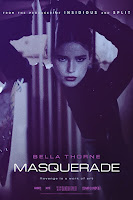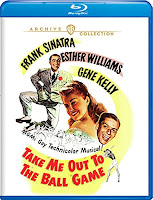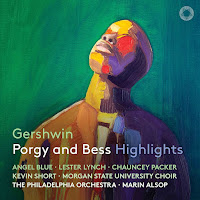the traveler's resource guide to festivals & films
a FestivalTravelNetwork.com site
part of Insider Media llc.
Reviews
“The Forever Purge” Is A Futuristic New Film That’s More A Part of These Times Than Ever
- Details
- Parent Category: Film and the Arts
- Category: Reviews
- Published on Monday, 09 August 2021 15:43
- Written by Brad Balfour

The Forever Purge
Director: Everardo Gout
Cast: Ana de la Reguera, Tenoch Huerta, Josh Lucas, Cassidy Freeman, Leven Rambin, Alejandro Edda, Will Patton
The fifth in a cinematic series, “The Forever Purge” is the ultimate conclusion of an effort by The New Founding Fathers of America (NFFA), the ominous ruling party, to allow the masses a way to let off steam — and to control them. One night a year for 12 hours, anyone can commit any crime, even murder, without legal ramifications. That’s the Purge.
In the fictional near-future America of the NFFA, Trumper-like insurrectionists seize the day and decide the Purge should continue beyond its limits. They’re not only intoxicated by the violence and rage, they want to attack all those they hate — immigrants, people of color and liberals. This sect of lawless marauders — the Forever Purgers — decide that the annual Purge doesn’t stop at daybreak and that it should never end. As members of this underground movement, they decide to overtake America through unending mayhem and massacre. No one is safe and the NFFA’s rule is threatened.
Adela (Ana de la Reguera, Cowboys & Aliens) and her husband Juan (Tenoch Huerta, Days of Grace) live in Texas, where Juan works as a ranch hand for the wealthy Tucker family. Juan impresses the Tucker patriarch, Caleb (Will Patton, Halloween), but that fuels the jealous anger of Caleb’s son, Dylan (Josh Lucas, Ford v Ferrari).
On the morning after The Purge, a masked gang of killers attacks the Tuckers — including Dylan’s wife (Cassidy Freeman, HBO’s The Righteous Gemstones), and his sister Harper (Leven Rambin, The Hunger Games), forcing both families to join together and fight back as the United States begins to disintegrate around them and the country spirals into chaos.
 Though Lucas starts off seeming like he could be one of the Purgers, he actually hates them especially after a band of them kill his father. So he and the other Tuckers join with Adela and Juan, as well a crew of other immigrants, to escape to Mexico (which has allowed anyone — for a few hours — to cross the border to safety from the insurrectionists). Through the help of a local Native American tribe, they make it across — an obviously ironic plot point. Throughout the slaughter and bloodshed, there are other ironic moments that reflect the underlying political nature to the film. And, not so ironically, it all takes place in Texas.
Though Lucas starts off seeming like he could be one of the Purgers, he actually hates them especially after a band of them kill his father. So he and the other Tuckers join with Adela and Juan, as well a crew of other immigrants, to escape to Mexico (which has allowed anyone — for a few hours — to cross the border to safety from the insurrectionists). Through the help of a local Native American tribe, they make it across — an obviously ironic plot point. Throughout the slaughter and bloodshed, there are other ironic moments that reflect the underlying political nature to the film. And, not so ironically, it all takes place in Texas.
When a recent New York Magazine ran its review of “The Forever Purge” it was in the same issue that featured a headlined cover investigating January 6th — “Insurrection Day.” And during the first inquiry made by Congress into what happened that day, four capitol police men recalled the crimes and violent assaults they endured from raging Trumpers — behavior not far removed from what is seen in “The Forever Purge.”
Vaulting from the record-shattering success of 2018’s “The First Purge,” producer Blumhouse’s infamous terror franchise hurtles into new territory. The Purge connection to contemporary events is clear. Once the series started, it evolved from being about the violent nature of America — its worship at the altar of retribution into being about bigger issues. The films shifted into stating strong political ideas and became both more relevant and terrifying than ever. So in the midst of our current political agitation, “The Forever Purge” was released. Though the plot follows a formula often seen in various apocalyptic films, it offers a look into a sci-fi future that seems all too possible — especially in the aftermath of Trump’s attempt to overturn an election.
The United States is in turmoil because half the population can’t acknowledge that the independence it supports was originally not for people of color — people who didn’t choose to be brought here and enslaved in the first place. Those disenfranchised people don’t deserve to be left out of America’s vision today. On the recent 4th of July weekend, the nation celebrated not only the creation of our country but the spirit of independence and equality that it stands for. Or so it seems. When the country was first established, such ideals only applied to some: white men, owners of property and those of European Christian origin.
The right has now developed a disinformation campaign about that history by creating a bugaboo about critical race theory. Ostensibly developed as a way of analyzing the impact of racial imbalances on our institutions, the right have made it appear as if public schools serving their children teach the idea that white people are essentially racist. So whether it’s in a fictional scenario like “The Forever Purge” or the reality of the attempted coup of January 6th, the mayhem that ensued was all for a Big Lie.
August '21 Digital Week I
- Details
- Parent Category: Film and the Arts
- Category: Reviews
- Published on Wednesday, 04 August 2021 19:44
- Written by Kevin Filipski
July '21 Digital Week II
- Details
- Parent Category: Film and the Arts
- Category: Reviews
- Published on Wednesday, 28 July 2021 20:12
- Written by Kevin Filipski
Art Review—"Cézanne Drawing" at MOMA
- Details
- Parent Category: Film and the Arts
- Category: Reviews
- Published on Tuesday, 13 July 2021 00:32
- Written by Kevin Filipski
More Articles...
Newsletter Sign Up
































